This article was last updated on: January 2019
This Kiev and Chernobyl article is kind of long and thus is divided into four (4) parts. You are about to start reading part three (3). Choose here any other part you may want to go to: | One (1) | Two (2) | Four (4) |
NUCLEAR REACTORS
BASIC CONCEPTS (BASIC MESSES?)
One of the main objectives of my visit to Ukraine at that moment was to be able to visit Chernobyl.
As I mentioned in the beginning of the first part, it’s something that I’ve always been very curious about.
It mixed my curiosity about the Cold War, about nuclear topics, and about topics of the Soviet times.
It was like the mother of my curiosities to say the least (as was North Korea, and as are places I haven’t been to yet such as Turkmenistan, or Transnistria).
And well, I was having the chance to visit, and of course, I didn’t let it pass.
I am going to take this part of the article around three topics. First, I’m going to explain more or less how does a nuclear reactor work.
Then, I will illustrate in a shallow way what is that I understand happened in the catastrophe, and last, I will talk about the consequences all this had.
In the fourth part, I will describe my visit to the place.
Before continuing, I feel compelled to make a VERY important clarification.
I am NOT a nuclear physicist or anything like it. In fact, at this point in my life I can barely add single digit numbers without starting to count with my fingers.
It’s just that it’s a topic that piques my curiosity, and like everything I’m curious about, I’ve tried to go deeper within my resources and capabilities.
So, I’ve read some books, reports, and treatises. I’ve seen several documentaries about it too, and well, I went to the place.
I think I have a mildly clear idea about the very basic shallow issues, but that’s it. Anything that I write can be wrong.
And sure enough, many of the things I’m going to express have been over-simplified (because that’s as far as my head goes), so please have all this very present.
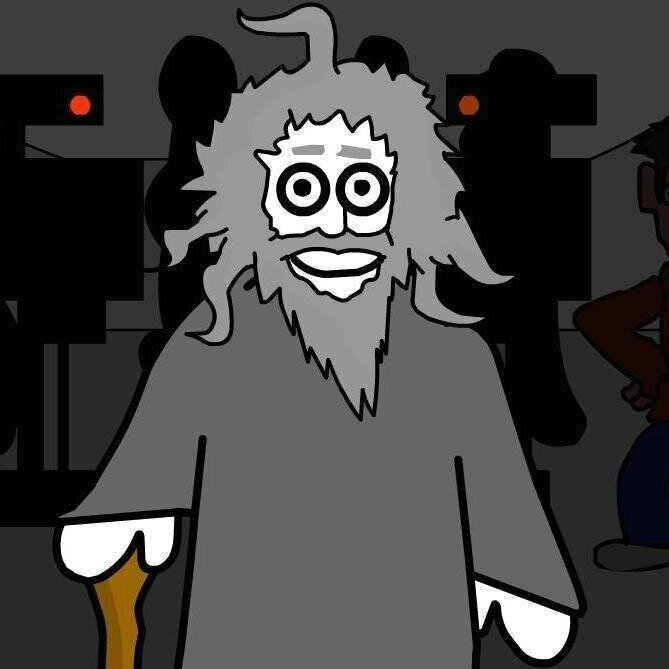
If you want to know exactly and deeply what happened, go to your closest Soviet nuclear physicist.
Let’s get on it now.
A nuclear reactor works taking advantage of the heat generated by the fission process, and making steam with that heat, and making that steam move generators that produce electricity.
WHAT IS FISSION?
If you remember your basic science classes at high school, you will remember that atoms are comprised of a core, and some orbits.
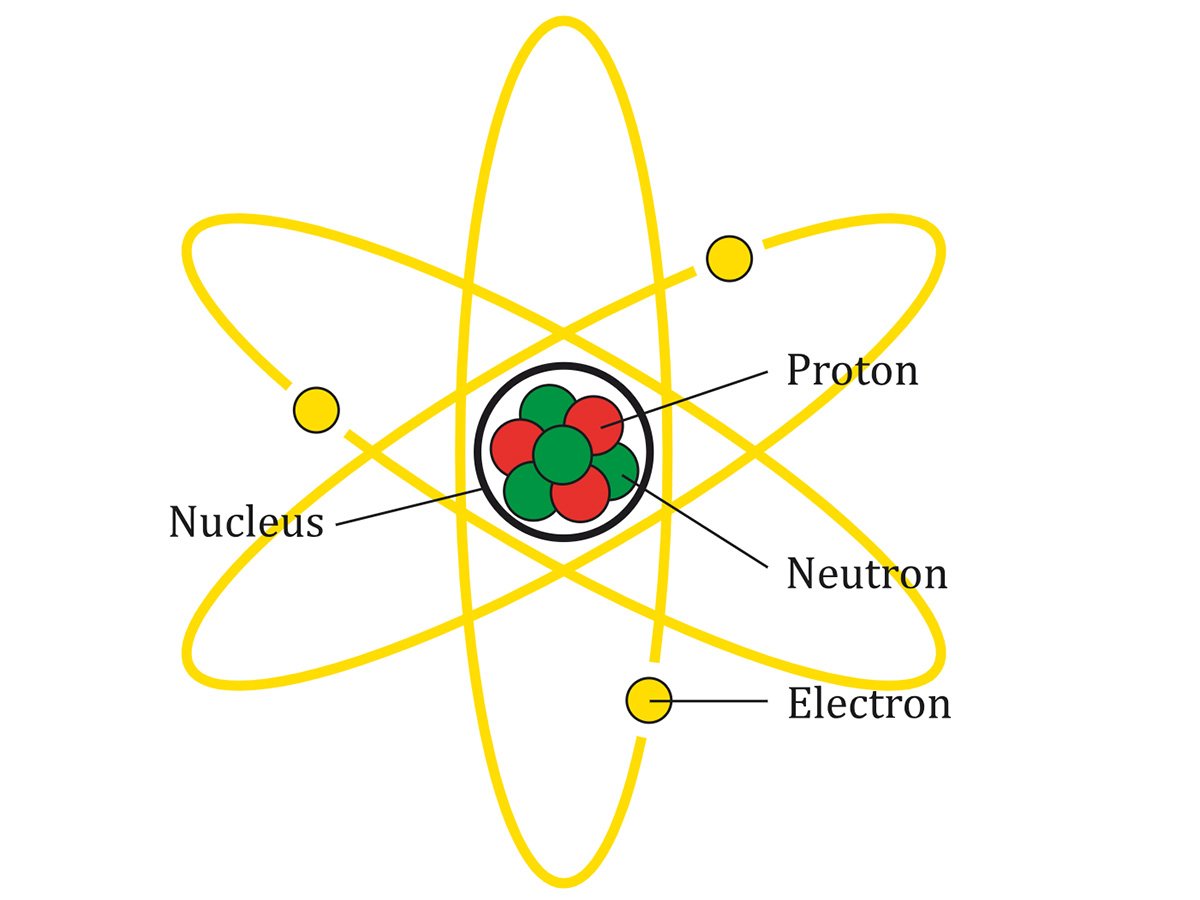
Fastfission
In the core, there are some particles called protons (positive charge) and neutrons, and in the orbits there are electrons (negative charge).
Usually, atoms have the same number of each one of the three subatomic particles, although that can vary in certain conditions. Those variations are called “isotopes”.
Well, many decades ago, they discovered that there are some elements that are sensitive to being “shot” with a neutron in its core.
And as the neutron hits bulls-eye, the core is divided in two. An element that behaves like this, that “lets itself be divided”, is “fissionable”.
When that core is divided in two, there is a release of other neutrons, radiations, and elements.
But mostly, there is a big energy release in the way of heat.

Stefan-XP
Under certain conditions, it’s possible for a core to be divided in two, neutrons be released, and those released neutrons go and crash head-on against another core.
And for that other core that has been hit by those neutrons to release energy as heat, and more neutrons.
These new neutrons are going to crash head-on against other cores that may around, and so on.
In the right conditions, a self-sustaining chain reaction is created that continues to release energy as heat.
And also radiations Alpha, Beta, Gamma, and other things.
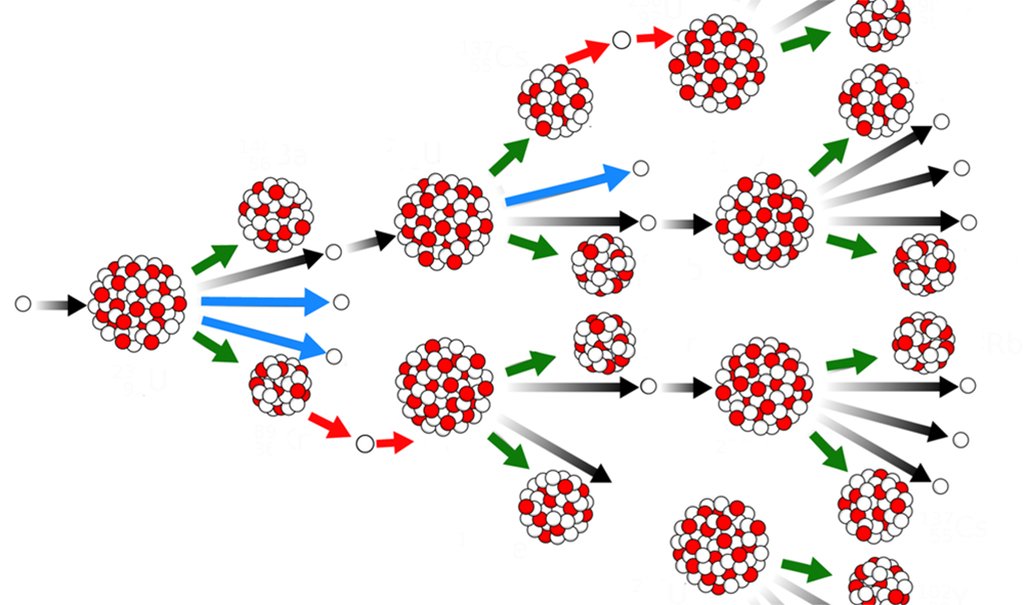
Michigan State University
HOW DOES A REACTOR WORK?
Nuclear reactors come in several configurations, but in general they share many things.
First, they get a fissionable element when it’s processed and prepared in some nuclear fuel rods.
Often, this element is Uranium-235, But it’s not the only one. A reactor is designed, with a core in which these rods are inserted.
When the reactor starts operating, the chain reaction I talked to you about starts there in that core with those rods, and they get hot as hell.
That chain reaction needs a moderator.
WHAT IS A MODERATOR?
Basically, when a core if divided in two, additional neutrons are created. These neutrons shoot out at full throttle to divide even more cores.
They shoot out at full throttle generally, and the faster they go, the less chance they have of hitting another core.
All this has some advanced maths and calculations, and some measurements of its own such as the electronvolt -eV-.
So, something that slows the neutrons’ speed is needed, and that’s precisely what the moderator does.
The moderator has the property of slowing the neutrons’ speed.
That way, it becomes much more probable that they will impact against another core, and in that way sustain the chain reaction.
This moderator can be water, heavy water, graphite, gases… Among others. In Chernobyl, a RMBK-1000 model, it’s solid graphite with water.
A not so orthodox design as far as I understand.
There is also a refrigerant.
WHAT IS THE REFRIGERANT?
The refrigerant transfer the heat generated by the nuclear fuel rods via steam or some gas, moving the generator and producing electricity in this way.
It also helps keep the reactor’s temperature within acceptable levels.
The refrigerant can be gas, or can be simply water.
So, initially we have some rods full of a fissionable element, arranged in a specific way within the core of the reactor.
They have started their chain reaction, and so they get hot as hell.
And they keep getting hot because the reaction continues, since there is a moderator (among other things) that allows the reaction not to decay and not to “die”.
The rods get in contact with the refrigerant, water in this case I’m illustrating.
The refrigerant is circulating about the reactor via some specific channels and circuits, boosted by electric pumps.
On having contact with those hot rods, the water boils and forms steam, lots of steam, delicious steam.
That steam is circulated in such a way that it will boost some generators.
Those generators produce the electricity, in the same way a hydroelectric plant would do for instance.
That electricity is used in part for the needs of the plant, and the rest is given to the electric grid.
The steam is condensed when it’s done its job, and being liquid again, it goes back to the circuit.
And that’s like the most basic explanation I can come up with now, but of course, all this has got many nuances, details, and variables.
For example, we have to remember that the water’s boiling point is 100 degrees centigrade, and the temperatures within the reactor are higher than that.
It’s necessary for the water to boil at a specific point within the reactor, or even outside the core depending on the reactor’s design.
And that’s why the reactor is pressurised, that is, it has a higher pressure than ambient pressure (one atmosphere).
Having the water at a high pressure (many atmospheres) they are able to have it remain in liquid state even though its temperature is more than 100 degrees centigrade.
See how it keeps going deeper? It’s a very interesting topic.
Managing these pressures and from the core, or with steam generators in other models, they are able to make the water boil right where it’s needed.
Because if it boils before the point where it should, the water loses the moderating properties, since steam doesn’t moderate like liquid water.
And that can bring about huge problems with the reaction. Among other things.
HOW DO THEY CONTROL ALL THIS?
As you have seen, they key here is to control the neutrons that are hitting the cores.
Controlling their speed with the moderator they help the reaction to continue, or die.
On the other hand, there are some elements like boron, cobalt, hafnium or graphite (among others) that have the property of absorbing neutrons, of “sucking them”, to put it some way.
Those elements are called“nuclear poisons”.
Some poisons are produced in the fission process, some disappear as they “suck” neutrons (they “burn”), others keep “sucking” and remain stable. Among other variables.
So, if any of these poisons is present, it “sucks” the neutrons before they crash head-on against other core, and in that way the reaction is slowed.
Or killed altogether, depending on what’s needed.
To use these elements, generally they make some rod not unlike the nuclear fuel rods, but comprised of nuclear poisons.
They’re called “control rods”.
There are complementary methods, such as filling the water that goes in the reactor with some nuclear poison. But the main thing is the rods.
The nuclear fuel is always in its place, except when it needs to be replaced every so many years.
Nonetheless, control rods are mobile.
Depending on the need to kill the reaction or boost it, they are inserted in the reactor core partially or totally. They are removed in the same measure, if that’s what’s needed.
Depending on reactor’s design, they can be inserted from above, or from below.
And their placement, design, quantity, response time, total insertion time, mechanisms that active them (automatic, manual, emergency, etc), and so many other things vary according to the design of the particular reactor.
The geometry of the design and insertion of these control rods in respect of the whole reactor core is very important, for reasons of effectiveness and safety.
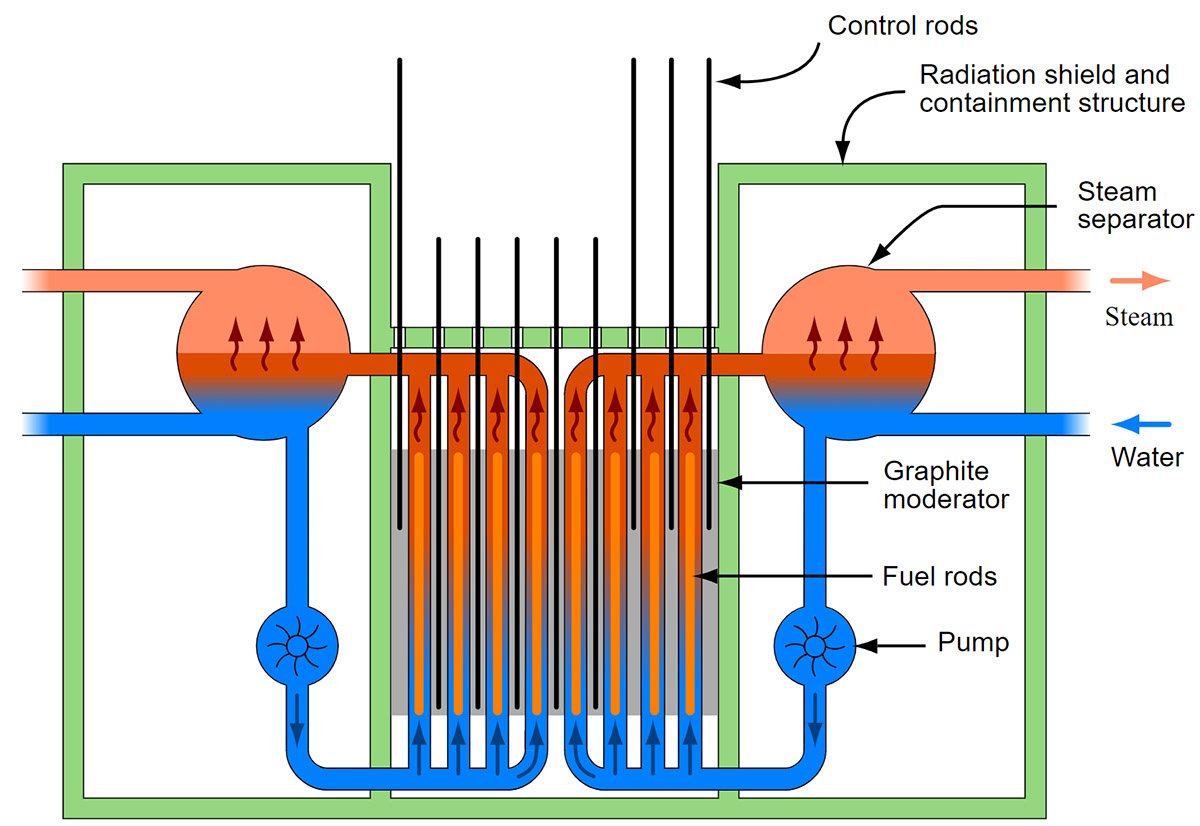
Fireice
So having explained all this, a little summary:
- A fissionable element is obtained (usually Uranium-235), prone to entering a chain reaction, and releasing energy as heat.
- It’s processed and converted into nuclear fuel rods.
- These rods are inserted reactor core. Everything is custom designed, according to the model.
- A chain reaction is started in them, and they get hot as hell. And that process continues so long as there is a reaction, releasing energy as heat.
- This reaction is controlled with elements that moderate, refrigerate and with nuclear poisons. The reaction can’t get out of hand because excessive pressure and temperature is formed, and then it can’t be controlled, it all explodes, and we die. But the reaction can’t let be totally stopped because the reactor shuts down, and electricity stops being produced.
- Values are kept within a range according to the maximum and minimum values of the particular reactor’s design, and to the needs of the electric grid.
- The refrigerant, very frequently water, boils in the point it’s needed generating steam, pressure is controlled for this, or through steam generators, according to the design.
- The steam generated in that boiling is driven so it can boost some generators that produce electricity.
- The steam is condensed and returns to the circuit. The produced electricity goes to the grid, and to the plant itself for its needs.
And so, everyone’s happy. In theory.
WHAT HAPPENED IN REACTOR NUMBER 4?
NUCLEAR CATASTROPHE
(Above photo by ZUFAROV/AFP/Getty Images).
So, what happened in Chernobyl?
Well, everything was fine and working as it should.
Chernobyl’s plant was composed of four RMBK-1000 reactors. There were plans to build six, but the remaining two were cancelled after the catastrophe.
There were some already in the Soviet Union, in Leningrad (current Saint Petersburg), and in Kursk.
In modern Russia some of them continue to operate, but with many safety modifications after what happened in Chernobyl.
Well, they had to shut down reactor number four to do routine maintenance, and so they decided to take advantage of the occasion and make a safety test.
They were going to test how much time could the generator produce electricity to feed the pumps that made the water circulate if the reactor was to be shut down.
If the reactor were to shut down, the generator wouldn’t have enough steam to keep working, but as long as it continued to turn, and before it stopped altogether, it was going to continue to produce electricity, less and less, until it shut off totally.
What they wanted to try was how long the pumps that made the water circulate could work with that diminishing electricity.
It was necessary to keep the core’s temperature if there was any problem.
If the reactor were to shut down, some emergency diesel generators were supposed to activate automatically for the pumps, so that the core was always refrigerated even if it was shut off.
But these emergency generators had a delay of 15 seconds before being activated, and then another 40 seconds before reaching the required output for the pumps to continue working.
So they had this uncertain 1 minute about the electric plant behaviour in case of emergency, a totally not desirable situation, and unacceptable from the nuclear safety point of view.
And they wanted to test if the remaining electricity the generator would produce by turning by inertia while it totally shut off was enough to cover the pumps’ demand during that period.
They had done that test already, but the electricity had run out very quickly, and it hadn’t been satisfactory.
So they made these changes to the voltage regulators and whatnot, and right there they were going to test if things improved with that change.
The test was supposed to be carried out during the day. But the boss of Kiev’s electric grid didn’t allow the power to go down until almost midnight, because the electricity was needed.
The reactor was working at half capacity during the day to cater to those demands, until finally they authorised its shut down, very late in the night.
Supposedly, to make that test the reactor would have to stabilise initially at 700 megawatts thermal MWt (that’s the measure of the heat released in a thermal plant).
Once stable in that number, the reactor would be shut off, the test would be made, the results would be noted, and in theory, that’d be that.
For some reason, operational error by some sources, and something not working as it should by others, they let the reactor fall to 30 MWt.
They say there were many communication mistakes, a change of shift, and they just didn’t coordinate.
They say those scheduled to make the test in the first place went home, and the people coming to replace them in the new shift had to make that test without being fully briefed and aware of the situation, among other things. Can’t know for a fact though.
That fall in power in those conditions is an issue because fission created Xenon-135.
This element is a nuclear poison, as explained before. It’s one of the nuclear poisons that wears down while it “sucks” neutrons, that “burns”.
So, in a normal operation under control with the power within normal parameters, enough neutrons are produced to keep the Xenon-135 under control, and not let it screw the reaction.
But they were operating at 30 MWt or less, this is very little for that reactor, and it was a regime whose behaviour wasn’t very well tested or documented, even though it was deemed safe.
There, the Xenon-135 that has been produced, with the power going down “invades” the core because there aren’t enough neutrons to “keep it at bay”.
The element has the characteristic of remaining in place several hours after being produced, it has a half-life of 9.2 hours.
So, they had the Xenon-135 that had been produced when the reactor was at 500 MWt or more, but now they only had 30 MWt or less to wear it down.
And by wearing it down, make the power levels go up again to those that were safe, and required for the test.
This invasion “drowns” the reactor, and then it becomes much more tricky to get the power levels up again.
To my view, it’d be the analogue to trying to turn on a Cessna 172 engine and flooding it.
After it’s been flooded it’s possible to turn it back on again, but it’s more complicated, may require a certain technique, and if you don’t do it right good luck turning it back on again. I don’t say it because it happened to me, nooooOoOO, never.
The same thing happens with the reactor. So, in order to get the power levels up again they removed a lot of control rods, those that I talked about as well.
Many more than it was safe to retire if they wanted the reactor to keep stable.
That was a mistake because the RMBK-1000 reactor needed a minimum of inserted rods at all times to operate safely.
In those low power, and not-enough-control-rods conditions, the reactor was unstable.
It’s believed that it’s possible that the operators weren’t even aware of that due to the little documentation available about the reactor’s behaviour in those conditions.
On the other and, without the control rods, it couldn’t be guaranteed that the chain reaction could be stopped in case they wanted to.
Anyway, removing the control rods to an unsafe level in order to fight the Xenon-135, they managed the power to go up to 200 MWt, and decided to carry out the test at that level, although the recommendation was 700 MWt.
The generator began its shut down process, at the same time the electricity began to diminish, and at the same time the water pumps that were connected to that generator were pumping less. All normal.
Not all the pumps were connected to that generator, there were others that were connected to another electric source, and were pumping normally.
That created a smaller flow of water going in the reactor, and they say, it had a slightly higher temperature.
This made the water to boil below the place in the reactor where it was supposed to boil (remember the pressure thing).
And that created steam where there was supposed to be water.
The consequence of this was a change in the conditions of refrigeration and moderation, since steam and water do not behave equally to those effects, as you may remember. This activated one of the design defects of the RMBK-1000 reactors.
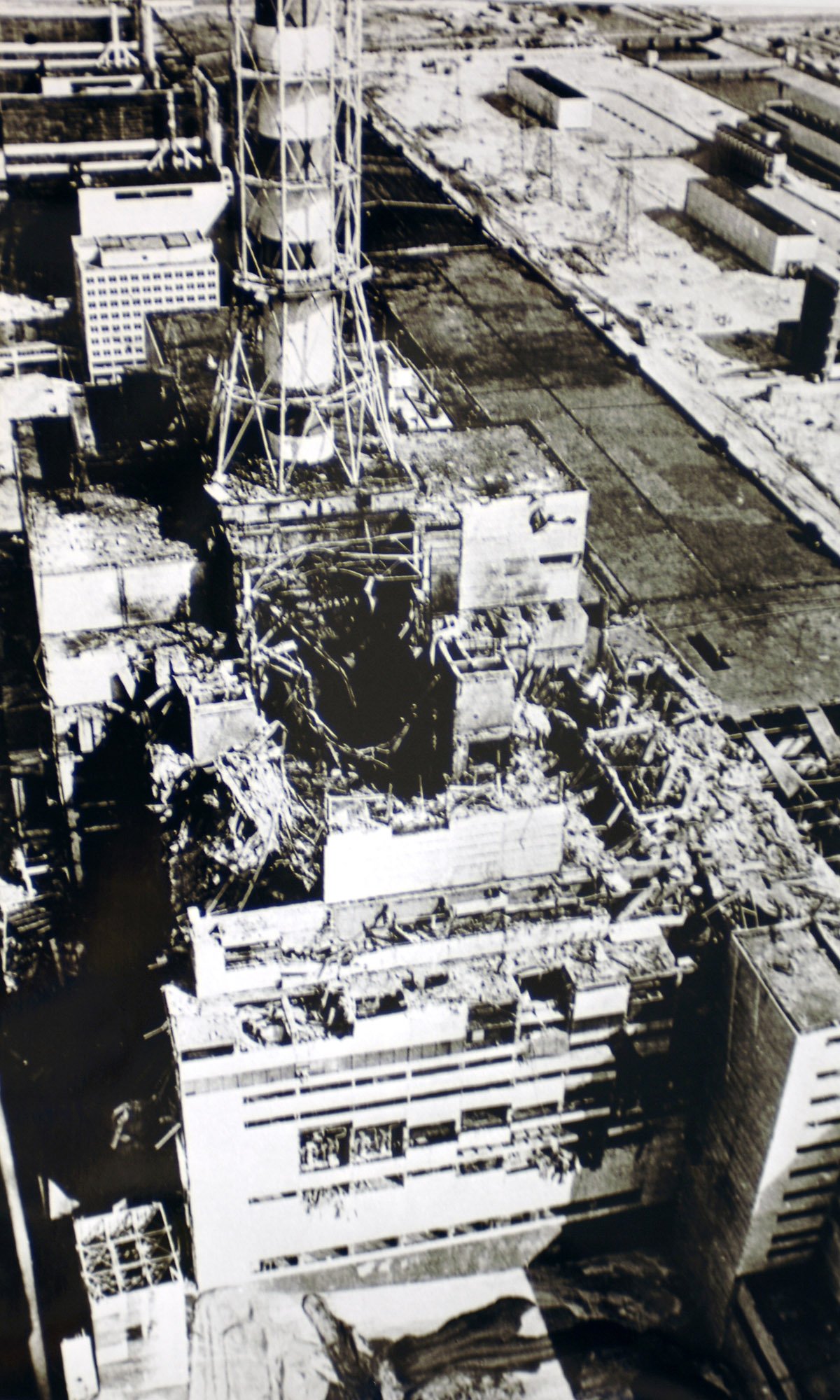
IAEA Imagebank.
——-
A side note:
There is a parameter called “void coefficient”, one of the components that determine the power of a reactor.
I don’t fully understand it, as many things (equations and stuff).
But the basic idea is that depending on the reactor’s design, the elements it uses as moderators and refrigerants, and other things, this coefficient can be positive or negative.
When the coefficient is negative, it means that if more steam is created where there should be water, by chemical and physical black magic that I don’t fully grasp (equations and stuff), the reaction slows, and thus, power.
So, if there is any problem, the reactor ends up shutting down itself.
That’s a safety measure, in case there’s a coolant leak, or any other issue that creates more steam in places where there shouldn’t be.
Nonetheless, Chernobyl’s coefficient was positive, and this was one of its biggest design failures, at least in what I’ve read.
That meant that the more steam it had, the reaction increased, and thus, power.
Safer designs used water as moderator and refrigerant. Chernobyl used water as refrigerant, but solid graphite as primary moderator.
So in a reactor that doesn’t use solid graphite as moderator, when water becomes steam where it shouldn’t for any reason, temperature goes up.
But at the same time the moderating effect is lost, because steam doesn’t moderate as good as water.
And so, the reaction slows down, or dies altogether, and it doesn’t go further than that.
Nonetheless, in Chernobyl, when water became steam the temperature would go up, but since the moderator was solid graphite and it didn’t change its state, it kept moderating just the same, and the reaction was kept alive. And the temperature going up even more.
The temperature increase made the remaining water boil even more, and the unmodified graphite doing its thing, and the reaction alive and increasing… Until it goes out of whack and boom.
Side note end.
——-
So having a positive void coefficient, reactivity and power were increasing at that moment in which more steam was being created in the lower part of the reactor.
And since the necessary control rods to stabilise that reactor were removed to counter the power decrease that was present before, compounded with the Xenon-135, things were not looking good.
The first 30 seconds of the test were normal. Power was increasing.
There, they pressed a button called AZ-5, it’s an emergency button to shut down the rector. This button inserts back the control rods.
There is a discussion about why this button was pressed. There are some people who say that it was because power was increasing, so to stop that increase.
Others say that since the test was coming to an end, it was simply pressed to shut down the reactor as a matter of routine.
There is a third group that says that the AZ-5 was generated without human intervention, but the computer’s logs made it very clear that it was manually activated.
Whatever the reason, the button was pressed, and the control rods began to be inserted. But the rods themselves were the second grave design issue.
They were shorter than necessary, and were inserted slower than they should.
On top of that, the channel were the rods entered, from above, was usually full of neutron-absorbing water.
The upper part of the rods was made of an effective material for this, but the lower part was simply a graphite point that displaced the water present in the channel.
The graphite points absorbed fewer neutrons than the present water. And when the graphite went in and the water went out, in that lower part, reactivity increased.
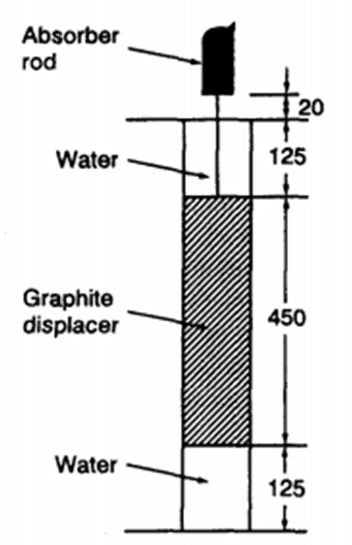
INSAG-7.
That means, there were more neutrons there crashing head-on against other cores. This was exactly the opposite effect to what was desired.
The problem had been detected in 1983 in a similar reactor in Ignalina, in current Lithuania.
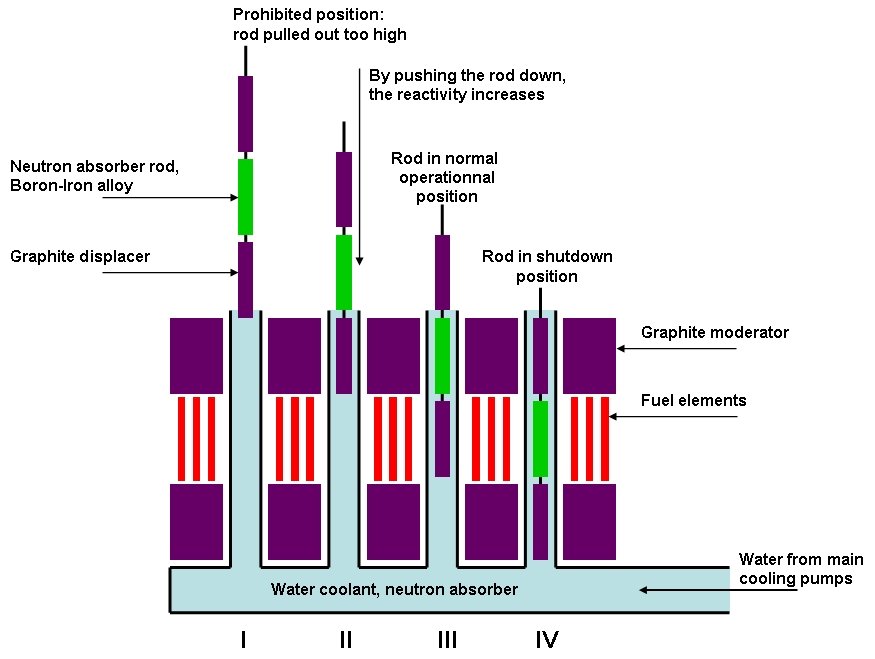
At that moment, they had already made recommendations to correct the situation, but they were never carried out, and it was all forgotten… Until Chernobyl.
So we have an unstable reactor due to an inadequate configuration, in which they were carrying out the test.
It’s generating steam where it shouldn’t, and thus increasing its power since it has a positive void coefficient.
And when they tried to shut it off, the rods that are supposed to control or kill the reaction, have the defect of being short and slow.
To add insult to injury, initially when they’re inserted they increase reactivity, and thus power, in the part of the channel where they go in. Quite the situation.
Well, they started to insert the rods after the AZ-5 button activation, and power increased immediately to 530 MWt.
All this while steam was still being produced, increasing the temperature, power, and pressure (the opposite to what was desired).
The first explosion happened there, and the parameter reading instruments stopped working there.
They say this first explosion hindered the total insertion of the control rods and broke nuclear fuel rods, and other physical damages.
Those conditions at the same time created a huge increase in steam, temperature and pressure, that made a second explosion happen just a few seconds after the first one, according to some sources.
Others say that hydrogen was created and this caused the second explosion.
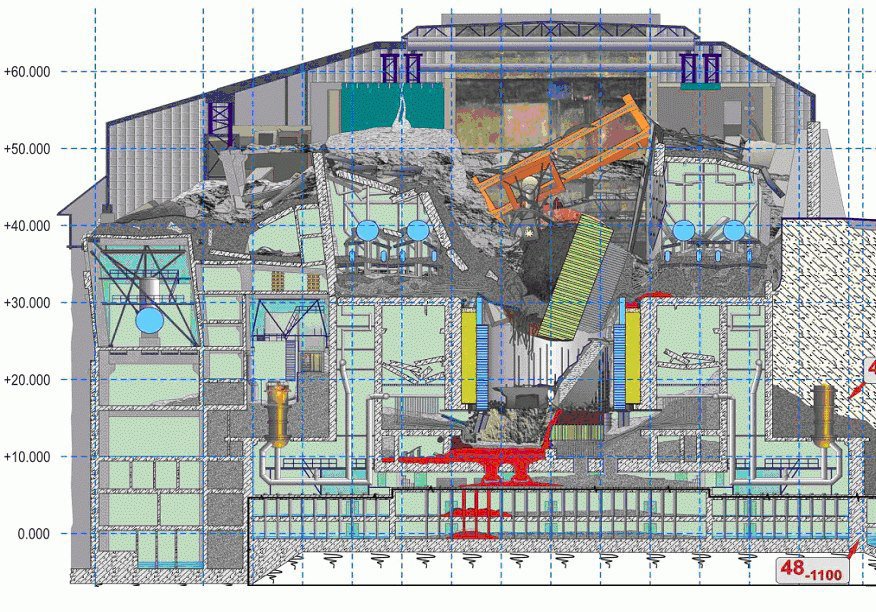
Others say it was simply an out of whack normal reaction because it didn’t have enough control rods inserted from the get go, since they had to remove them in order to increase the power after the fall to 30 MWt.
Whatever the reason, they say power went up to 30000 MWt or more in a matter of seconds.
That’s like ten times the maximum power of the plant in normal conditions.
That second explosion lifted the 2000 ton cover of the reactor, and after that it fell back on top of the core in a bad position.
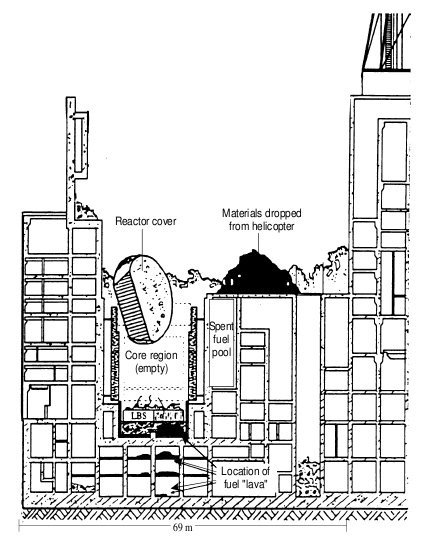
That’s when the shit hit the fan, including red-hot radioactive elements, radioactive dust, graphite, fuel rods, and other things.
The explosion made a hole in the roof, and the reactor caught fire. A radioactive cloud escaped… And there the catastrophe started.
CONSEQUENCES
LONG LASTING
CONSEQUENCES
(Photo above by IAEA Imagebank).
The Soviet Union was still quite a reserved country, especially in issues such as this one.
They say this accident accelerated the “Glasnost” (“Transparency”) policy of Gorbachov.
The accident wasn’t known outside the country until the radioactive cloud reached Sweden.
There, the clothes and shoes of the workers of the Forsmark nuclear power plant showed a lot of radioactivity when going in and out, in routine checks.
Scared as they were, they did some tests, and concluded that the plant didn’t have any leak. The problem wasn’t theirs.
According to the wind patterns of the moment, the cloud may have had come from Soviet territory.
In the Vremya Soviet news, the accident was but a simple side note, as if it was an irrelevant show business tidbit.
Gorbachov finally did an official announcement 18 days after all happened, there was no hiding it anymore.
Click here to see the announcement video, part of USA’s ABC news.
But anyway, after the blasts the firefighters were called.
After some five hours the fires were extinguished, except for the one in the reactor. That one lasted for many days.
First it was the local Chernobyl firefighters, then the Pripyat city ones, then help arrived from Kiev.
Several of those firefighters received lethal radiation doses.
Some accounts say the firefighters had no idea what they were fighting against, believing it was a “normal” fire.
Other accounts say they knew very well what they were up to, and they even joked about it (better than crying, I guess).
In general, there were suspicions about the gravity of the matter, but the radiation amount they were against was being grossly underestimated.
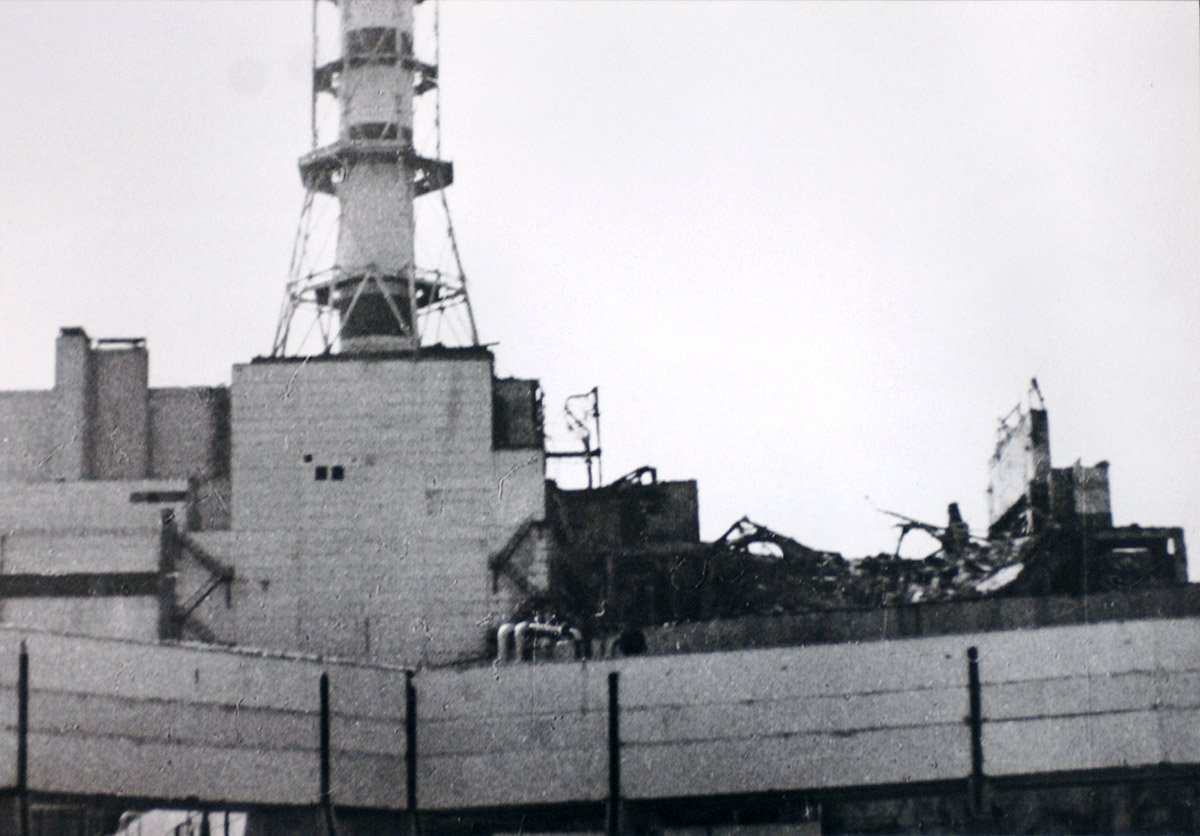
IAEA Imagebank.
In part, that happened because of failures in the dosimeters, or unreliability of them, or simply because the instruments they had didn’t have a scale that could measure so much.
You can have a car with a speed meter that goes all the way to 200 km/h, but if for some reason the car is going at 20000 km/h, the needle won’t go beyond 200 km/h all the same. It has no way to do it.
In the car you can notice because little white stripes Star Wars style begin to appear, and you don’t arrive late as you usually do.
But when you’re dealing with radiation that’s invisible to the human eye… What to do? How to know?
So, those instruments would reach their maximum limit, that was way lower than the real level. The needle would remain there, and now there was no way to know the real radiation level.
Things were so messy that some operators of the plant believed the core was still intact.
The three other reactors of the plant were still working, and they were shut off as hours went by.
The next day, April 27th 1986, Pripyat evacuation started.
Some public announcements were made in the sense that the evacuation was going to be temporary, only for three days.
People should only take with themselves their documents, some clothes, and some food for that period.
They left the rest of their things in their homes, and they mostly remain there yet, to early 2019.
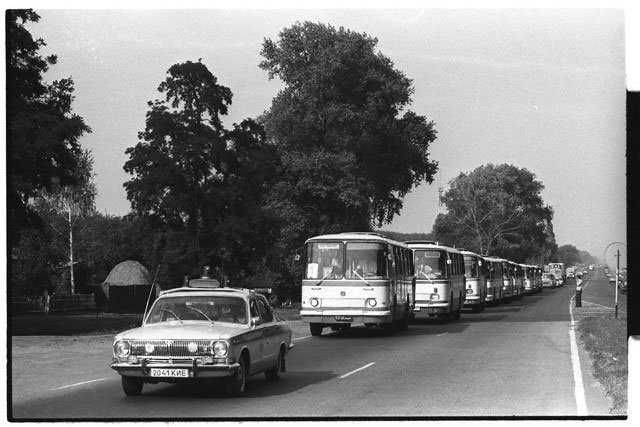
Igor Kostin.
After that, there were many actions to help clean and avoid another explosion, as was feared could happen back then.
One of these operations was to make a tunnel underneath the reactor to prevent the radioactive elements from reaching the underground waters and contaminating them.
First they tried freezing the ground with liquid nitrogen, but that proved impractical, and they chose to fill the tunnel with concrete instead.
They tried to throw back in the destroyed reactor core some very dangerous elements that were in what remained of the roof of reactor number 4.
Elements such as pieces of nuclear fuel rods that were in the roof after flying away in the blast, and others just as dangerous.
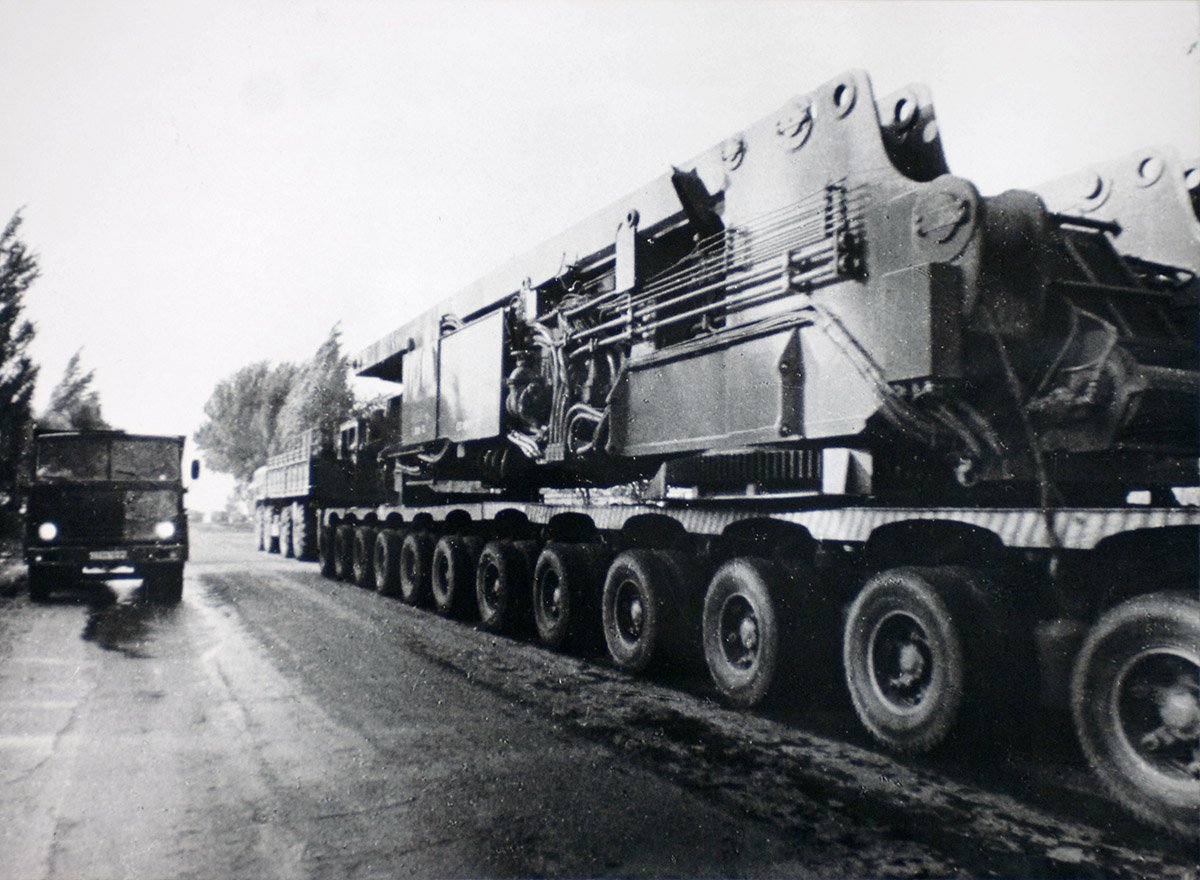
IAEA Imagebank.
In the beginning they tried to do it with robots, but the radiation was so strong that it would quickly destroy the electronic components.
The robots couldn’t do their job.
So, that job was given to humans, nicknamed “bio-robots”.
With very basic protection, their mission was to run like hell, throw what they could back to the reactor core from the roof, and run like hell back.
I read somewhere their time limit was 40 seconds, and that they could only make one try per person.
In that same part, I read that many people ended up doing many tries.

Yaplakal.com
While at that, many Helicopters were sent to try to pour some elements mix into the core that would allow the fire to die, stop the reaction, lower the radiation and the temperature, among other things.
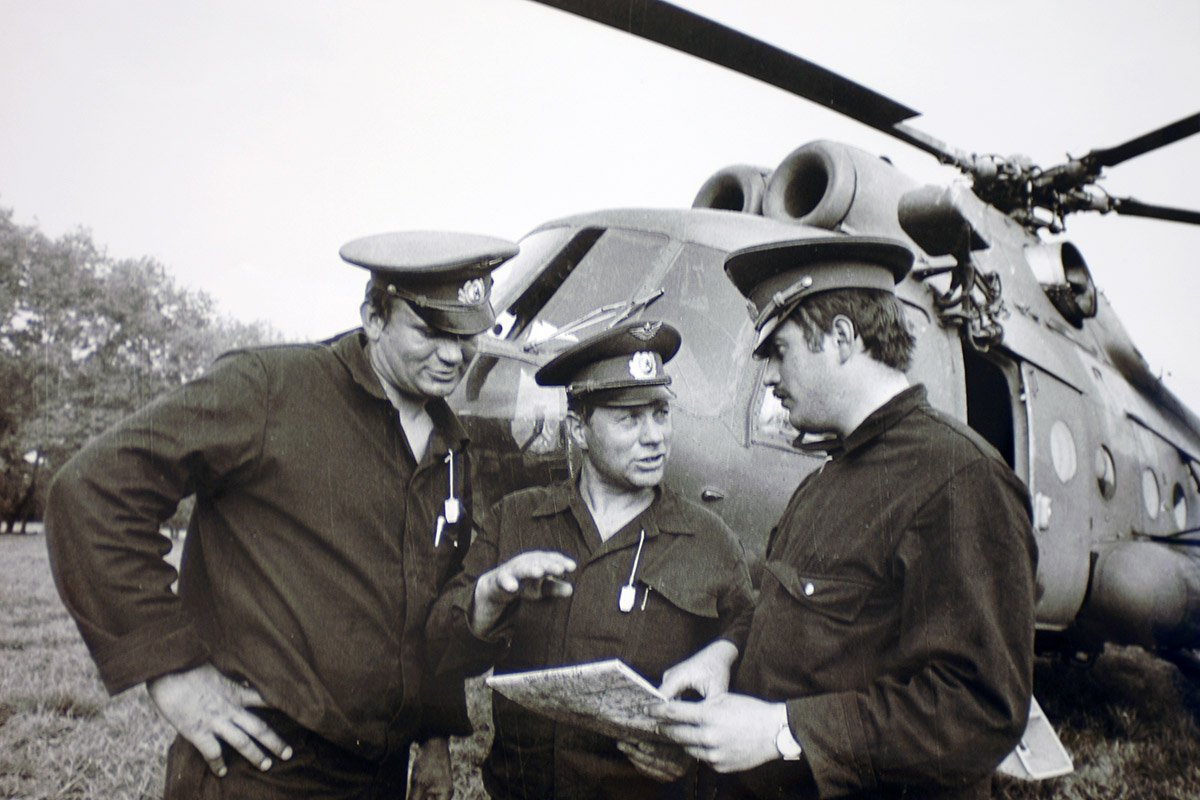
IAEA Imagebank.
Helicopters would be placed right on top of the reactor, and tried to point their cargo to the destroyed core.
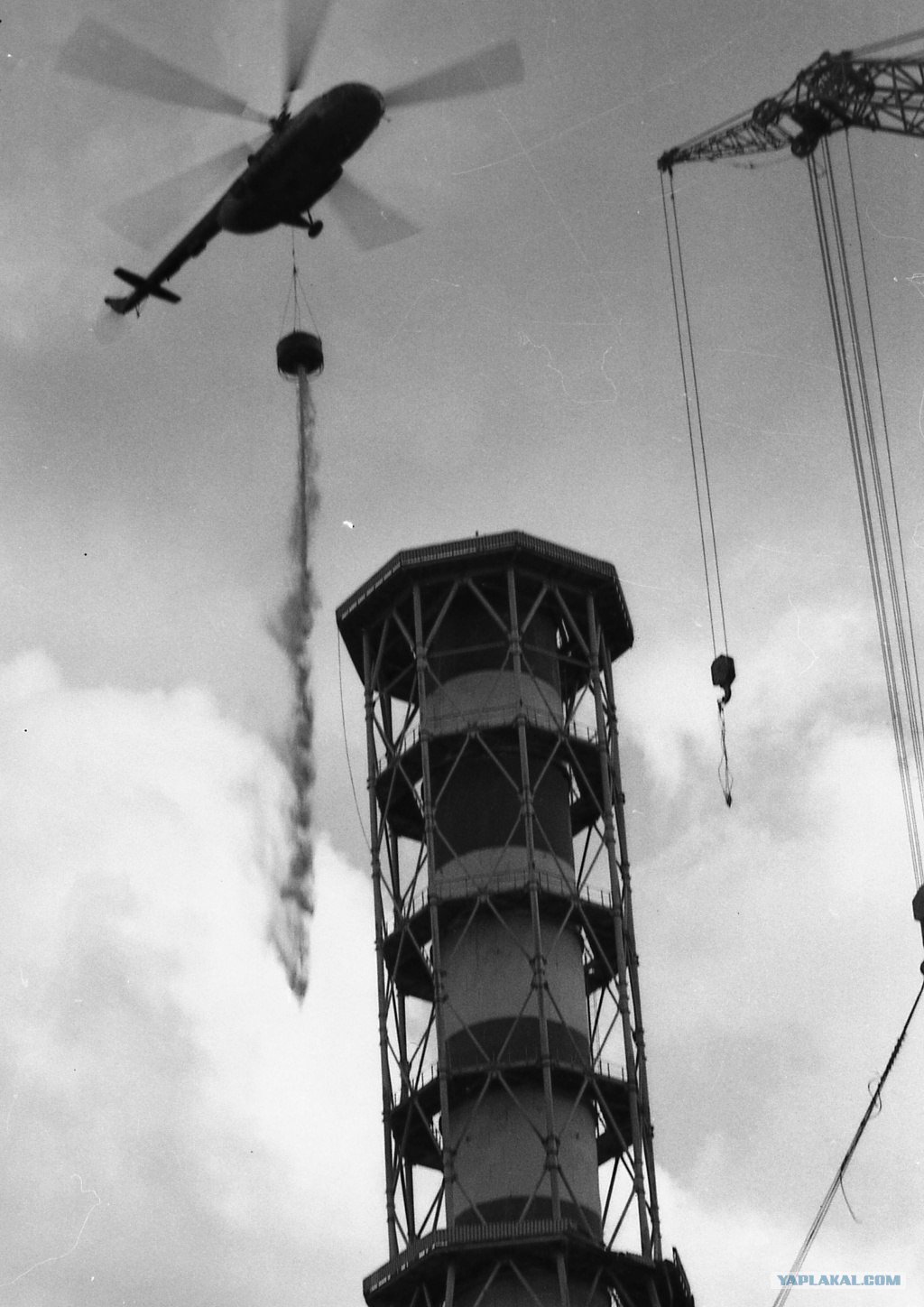
Yaplakal.com
Many Pilots received very high radiation doses in that operation, and later they learned most of that material didn’t even hit the target anyway.
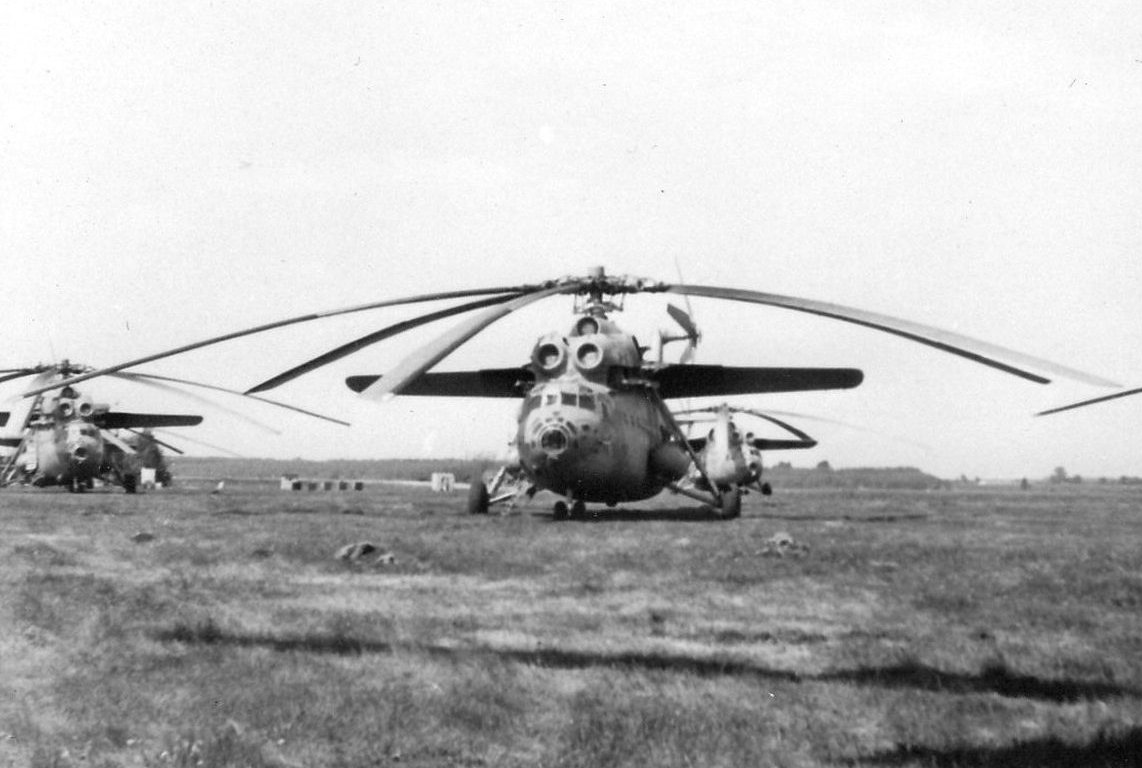
Russian Helicopters.
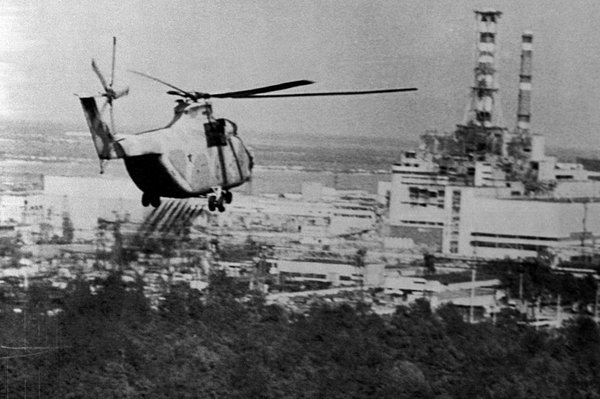
Russian Helicopters.
One of the Helicopters got entangled with some crane cables, crashing and killing its crew.
One of the most remarkable Pilots in this operation was called Anatoly Grishchenko. He survived the operation, but died in Seattle, United States, in 1990.
It happened while he received treatment for leukaemia, which allegedly he developed because of Chernobyl, and the role he played there.
A 10 km “exclusion zone” was created, later increased to 30 km. It’s illegal to live in that zone, and it’s very radioactive in many parts.
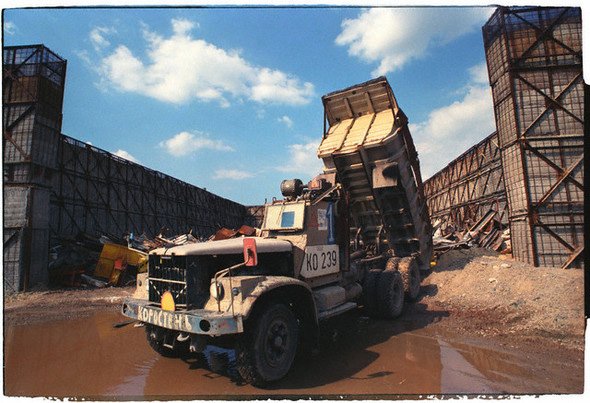
Yaplakal.com
Many of the vehicles they used in the operations are still in the zone, as well as places other vehicles and elements were buried.
Very radioactive and dangerous places.
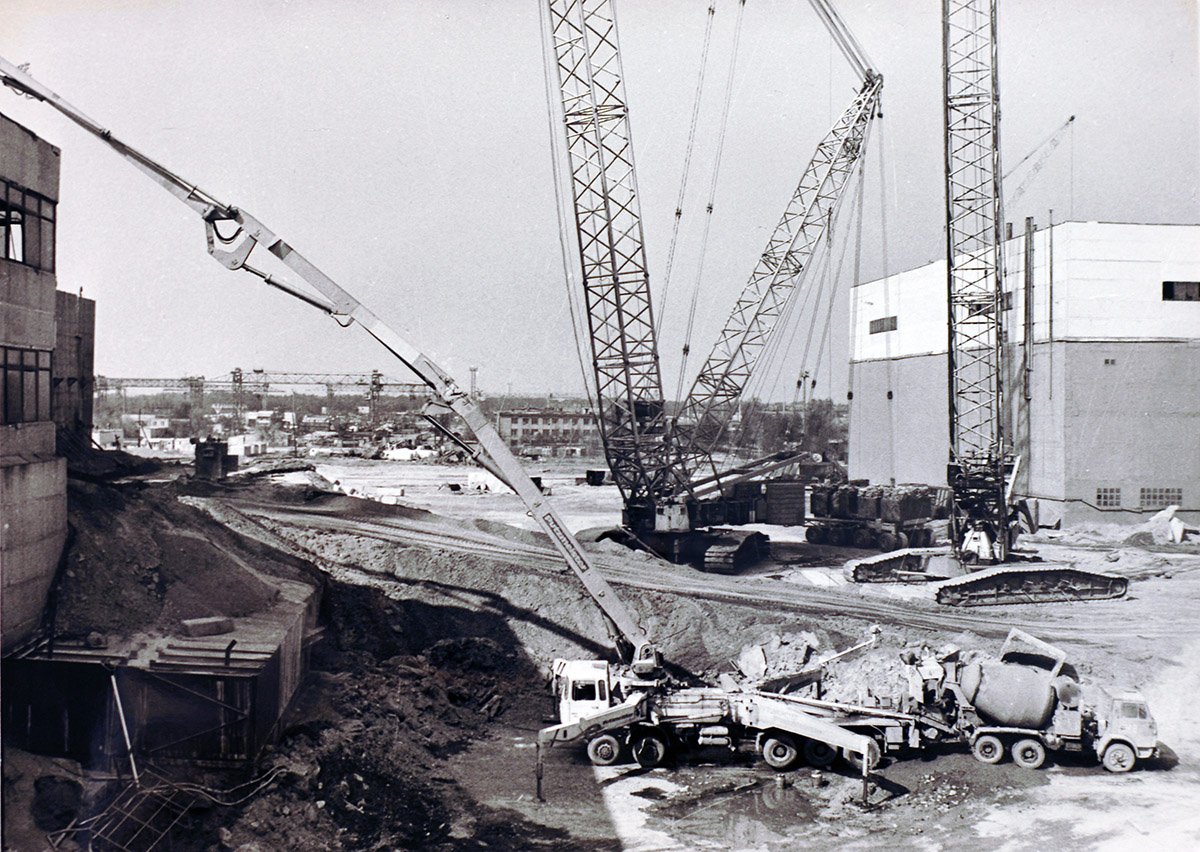
IAEA Imagebank.
Some people have gone inside illegally, and has stolen elements that remained lying around.
Things like scrap metal and auto parts. After stealing they try to sell it, but that’s a big danger because of the radioactivity levels.
I read it wasn’t weird for people who wanted to buy second-hand things like that in Kiev, to do so with a dosimeter in hand, just in case.
And well, fires were extinguished now, the soil underneath the reactor with concrete, the population evacuated, and exclusion zone created, and the world was aware of what had happened.
Most of the nuclear fuel was still in what remained of the reactor.
And what remained of the reactor had a huge hole facing the elements, caused by the accident blast.
They feared that if there was any contact with water (for instance, if there was a huge downpour), there would be the chance of another chain reaction, and another explosion.
On top of that, there was the need to prevent dangerous elements of the reactor to continue escaping to the atmosphere, such as radioactive dust or smoke.
So, the biggest civil engineering operation of the moment started.
They decided to wrap the reactor with a metal and concrete structure.
This structure is known colloquially as the “sarcophagus”, and it was built between June and November 1986. A record for such a thing.
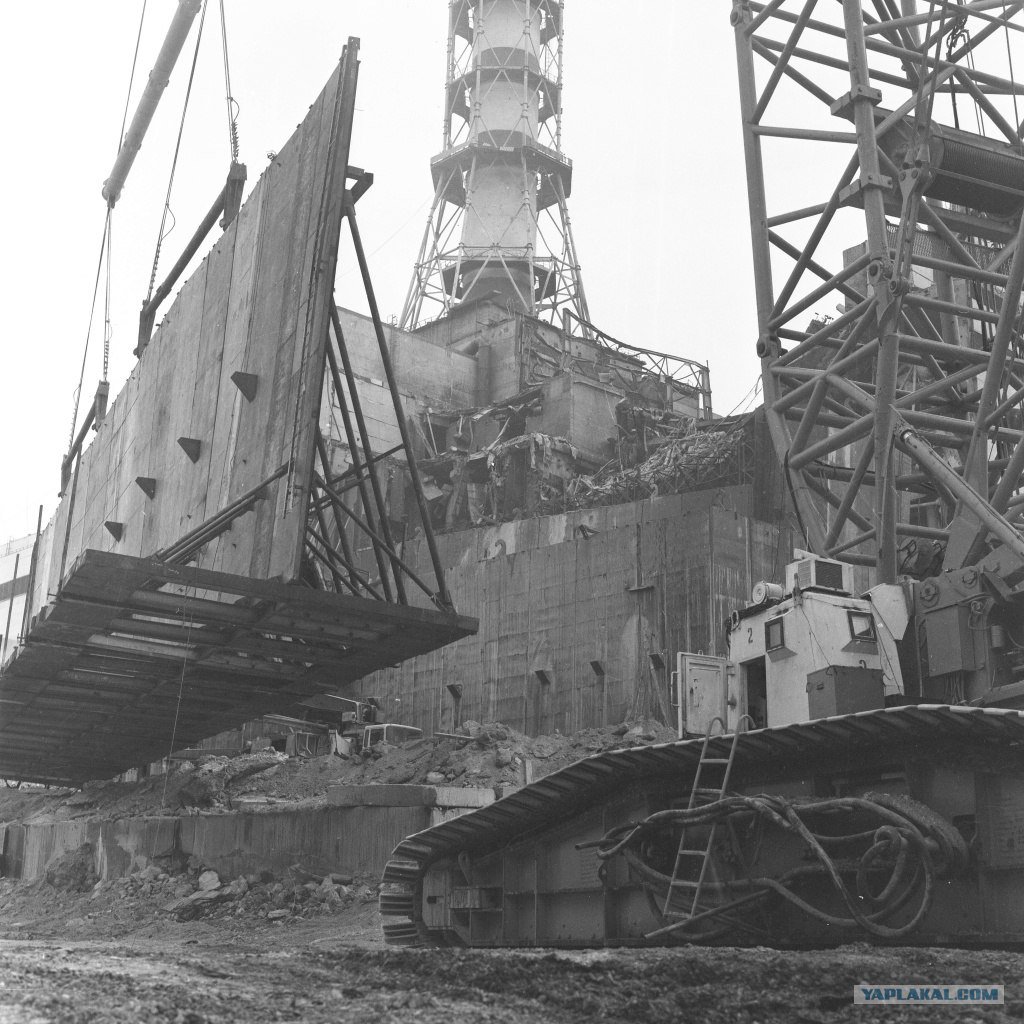
Yaplakal.com
They warned the structure wouldn’t last more than 20 o 30 years, and it was a collapse risk since it was built on top of the weakened and unstable foundations of what had remained of the reactor.
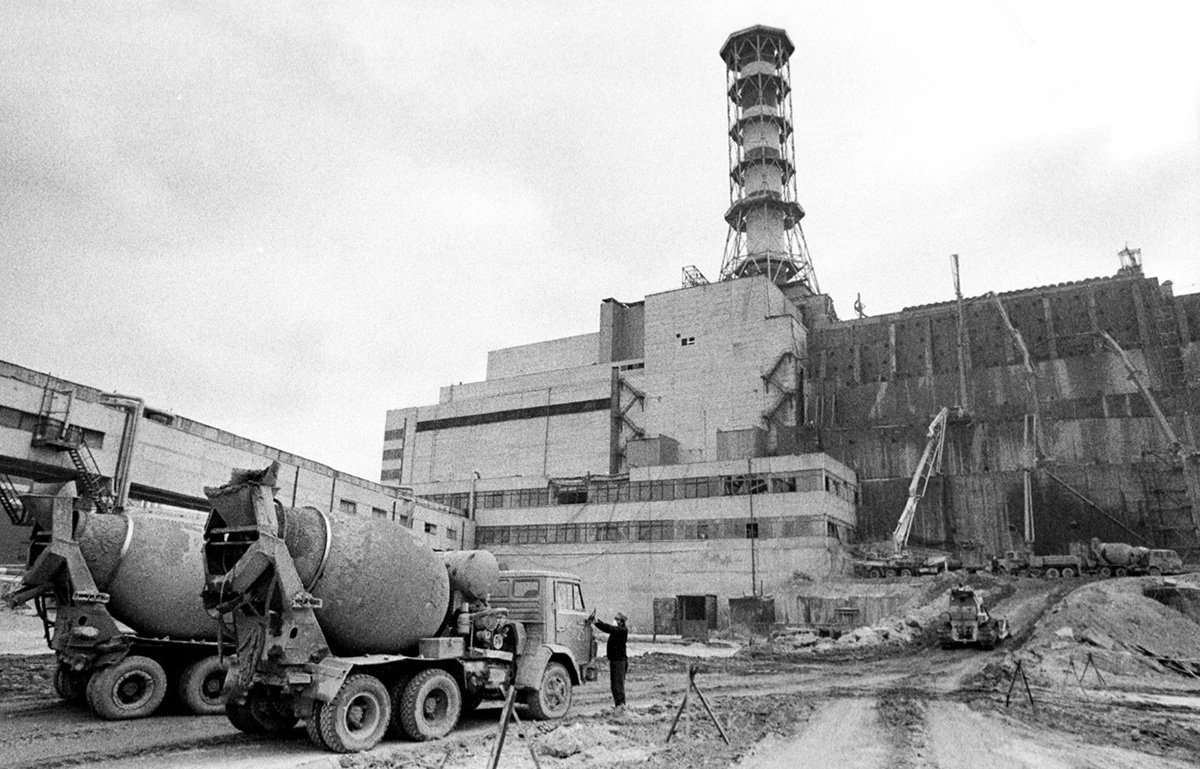
Yaplakal.com
When the sarcophagus was ready, the most urgent part of the work right after the accident happened was finished.
The risk of the reactor exploding once again was reduced, when they discovered in a very dangerous research mission inside the core, that most of the nuclear fuel wasn’t right there.
Most of that fuel was underneath the reactor, converted in corium.
Corium is a sort of super radioactive lava that only happens in nuclear accidents such as this one.
It’s not a naturally occurring element, and it’s only been created in the Three Mile Island (United States), Chernobyl (Soviet Union), and Fukushima (Japan) accidents.
Getting close to the corium they discovered would have proved fatal.
It was remotely discovered in Chernobyl when they strapped a camera to a remote-controlled toy car, and they inspected the place where it was discovered with it.
They called the corium they found in Chernobyl “Elephant foot” because of its shape.
With the corium in that place, it was less likely for it to interact with water, and the alarm was lowered somehow.
The sarcophagus was built anyway.
More than 600.000 people among civilians and military took part in all these processes. These people were called “liquidators”, and they received certificates, compensation, and medals.
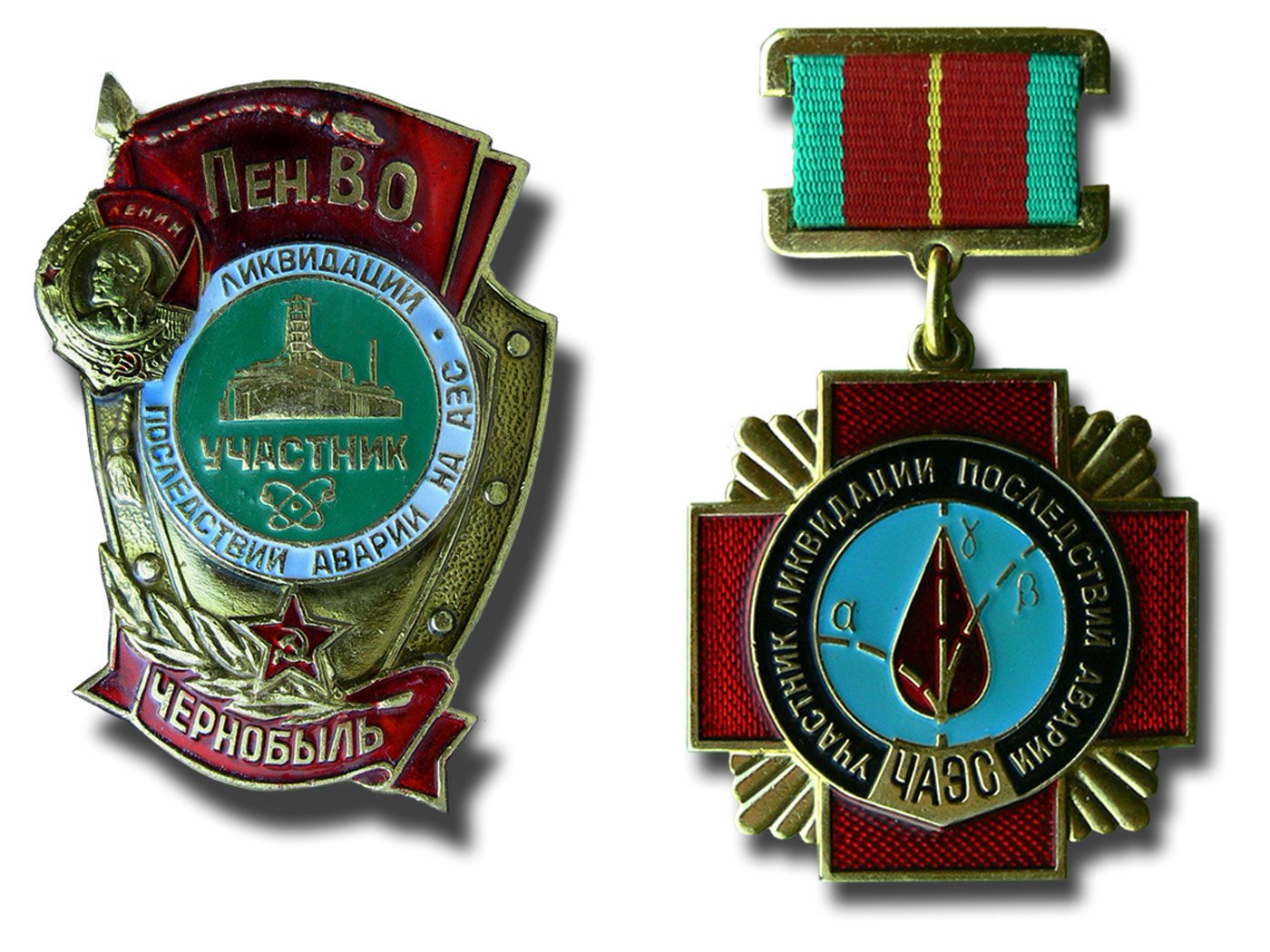
F.Lamiot y A.Villain
Those numbers vary, some sources say there were fewer people. But in any case, it’s tens of thousands.
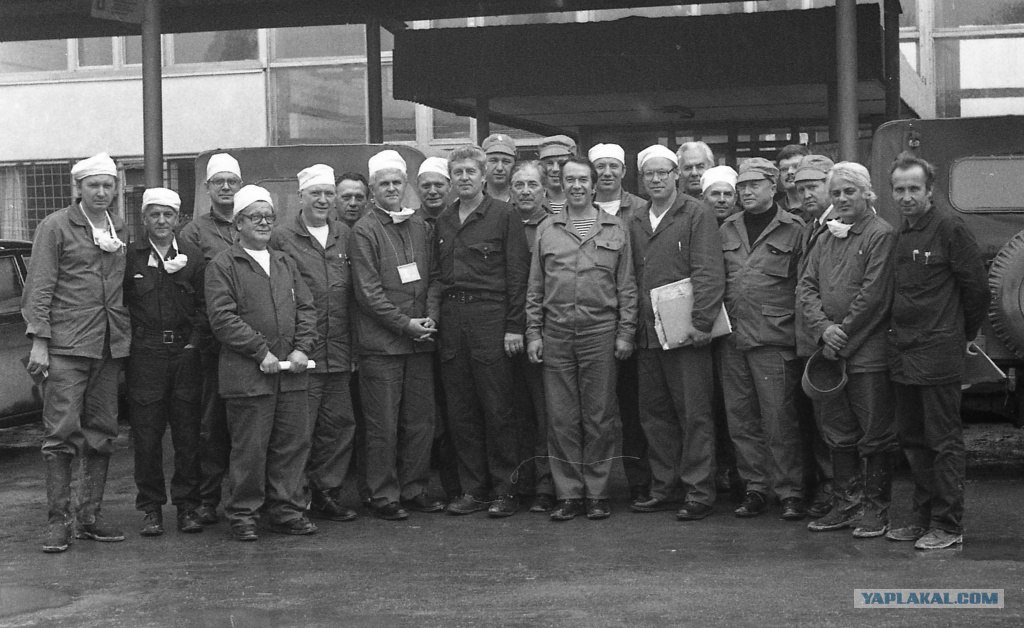
Yaplakal.com
Some were exalted as Heroes of the Soviet Union, others were forgotten and ignored by the government.
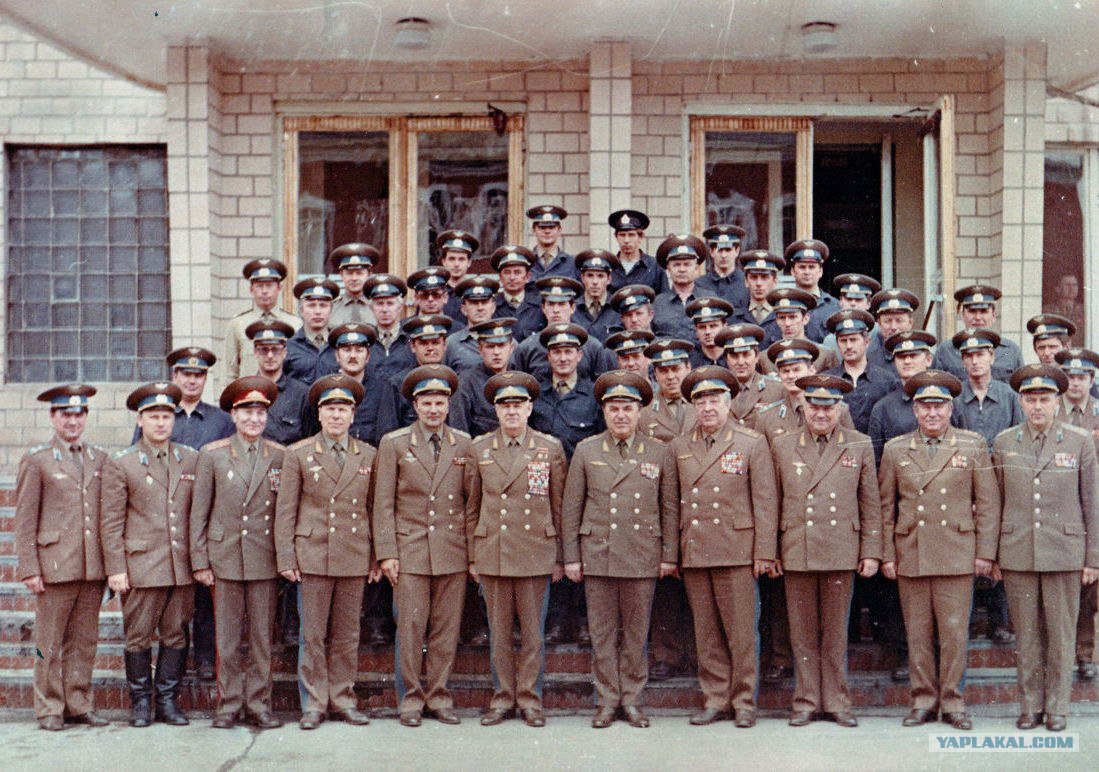
Yaplakal.com
The Soviet government spent a huge amount of money in the efforts after the tragedy. Some people say it almost bankrupted them.
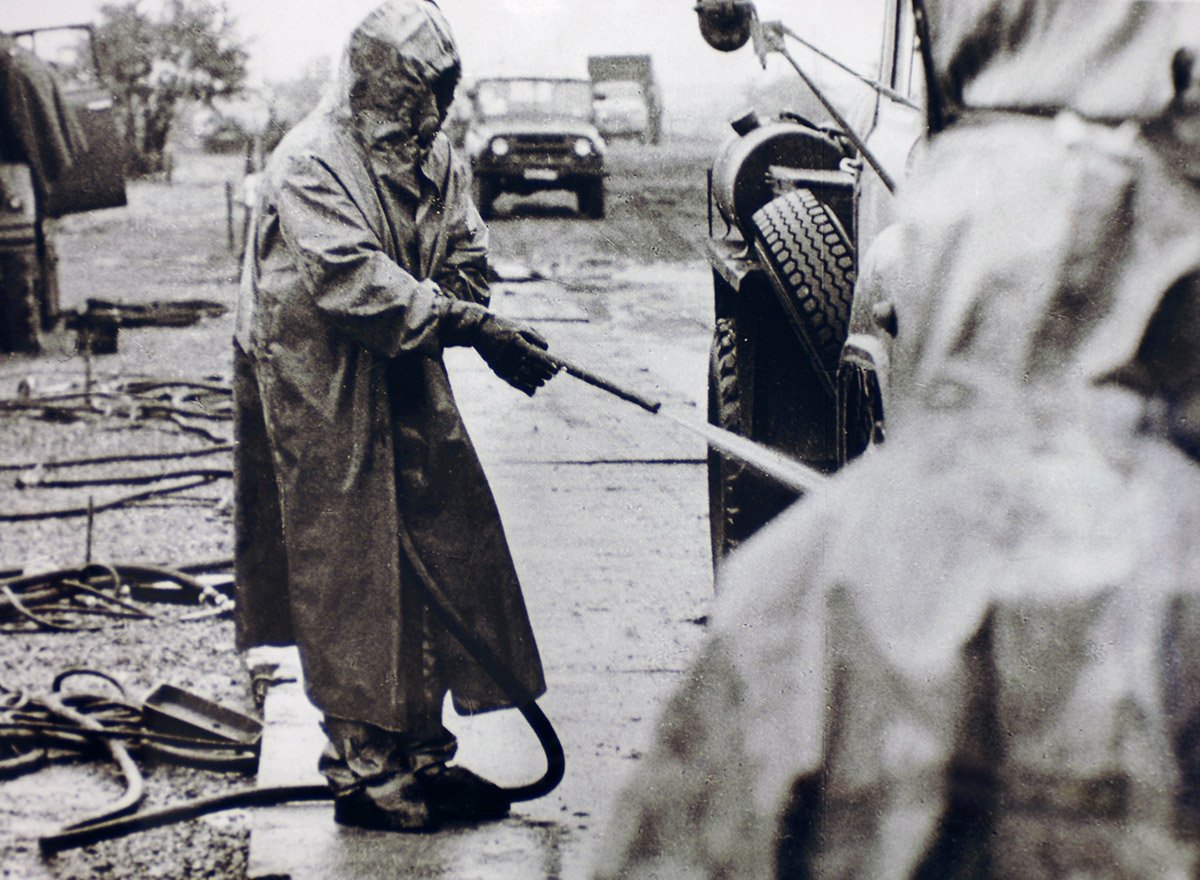
IAEA Imagebank.
In addition to that, an important quantity of arable land, and usable forest was lost.
When the Soviet Union disappeared, the new countries of Ukraine and Belarus had to invest a good chunk of their gross domestic product in matters related to Chernobyl.
This money was for technical items, and for compensations, maintenance of the health system, and payments to victims of different nature.
Officially 31 people died because of the Chernobyl catastrophe.
This between plant operators present at the time of the accident, and firefighters that received lethal radiation doses, and died a few days after because of that.
Nonetheless, there are lots of discussions about the consequences in the middle and long term.
There are diverse studies that say there may be from 4000 up to 60000 deaths related to the accident.
It’s a very difficult issue to reach consensus on, because of the different methodologies used, and statistic uncertainties.
They say cancer increases haven’t been as noteworthy to be statistically conclusive, and it isn’t possible to directly blame Chernobyl.
How to know if a person that got cancer in 1989 was because of the accident, or if he/she was going to get it anyway? What about 1995? And 2019?
So, estimations of the deaths that followed the accident are diverse, with very different numbers.
And as with everything, it all depends on who’s talking and what’s convenient for that person.
In the little I’ve read, the only thing that has noticeably increased is the thyroid cancer. Especially in children of that time.
The sarcophagus continued to be a latent danger, and the new, safer and more technical confinement structure was finished in 2018.
This structure was built by Novarka, and was paid for by an international fund, as Ukraine couldn’t afford the whole thing on its own.
This structure will allow for the dismantling of the rest of the reactor and the original sarcophagus, and it’s expected to last for 100 years.
It was placed over the reactor using some especial tracks, a totally cutting-edge engineering work.
The construction of reactors 5 and 6 was cancelled in 1989.
But the circumstances of the years immediately before the Soviet Union disappearance en 1991, and those of Ukraine once it became an independent country, meant the reactors that weren’t destroyed were put back online to produce electricity.
Reactor number 2 had a fire in the generator (not in the core, thankfully) in 1991, and was put offline.
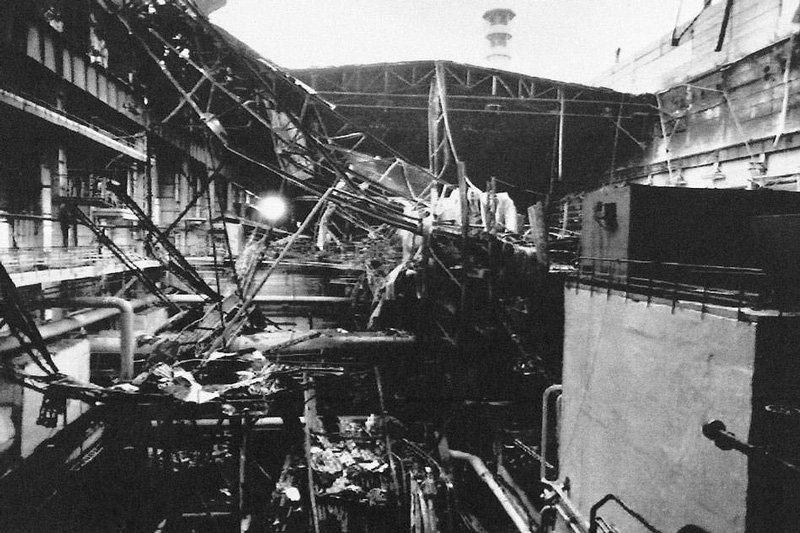
Yaplakal.com
Reactor number 1 was switched off in 1996, and reactor number 3 was switched off in 2000, 14 years after the tragedy.
With the switching off of reactor number 3, Chernobyl power plant stopped working and providing electricity, and it’s being decommissioned.
The process is expected to continue well into the next decade.
At the time of writing this, we have the plant in decommissioning process and the NSC (“New Safe Containment”) almost ready, and installed on top of what remains of reactor number 4 and the sarcophagus.
There is also the active exclusion zone with its radioactive problems, and the required scientific, administrative, and government activities.
And from all this, I could visit part of the exclusion zone from Kiev and some checkpoints, the town of Chernobyl, what’s left of Pripyat, and points as close to reactor number 4 as was possible.
I went before the NSC was put in place, even though it was already being built in place. The old sarcophagus was is still in place.
Let’s continue to what I have to show about that visit, the last part of this article.
——
Side note.
A few years ago, in Russia they had a beauty pageant in the nuclear energy industry called Miss Atom.
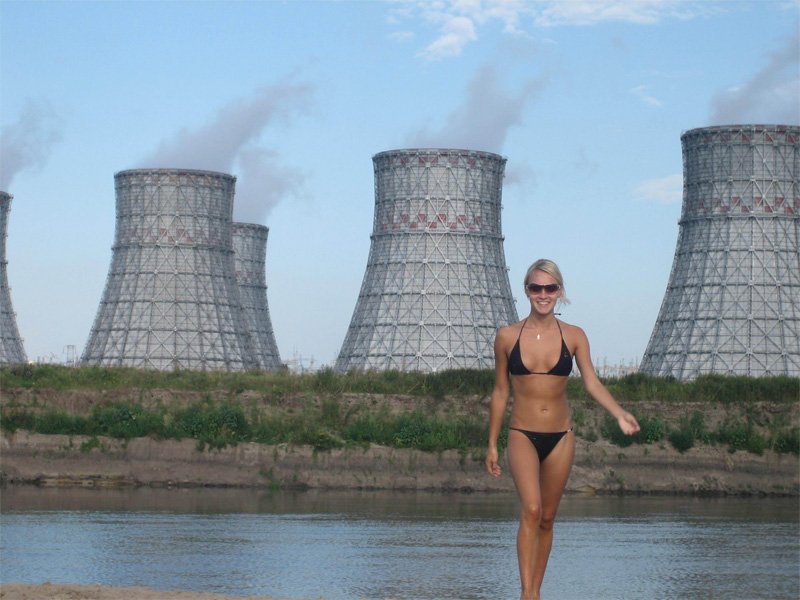
Miss Atom.
It was open to industry employees and students from 18 to 35 years.
My favourite is the 2008 Miss Atom Yulia Nagayeva. Grr!

Miss Atom.
Krasivaya!
Side note end.